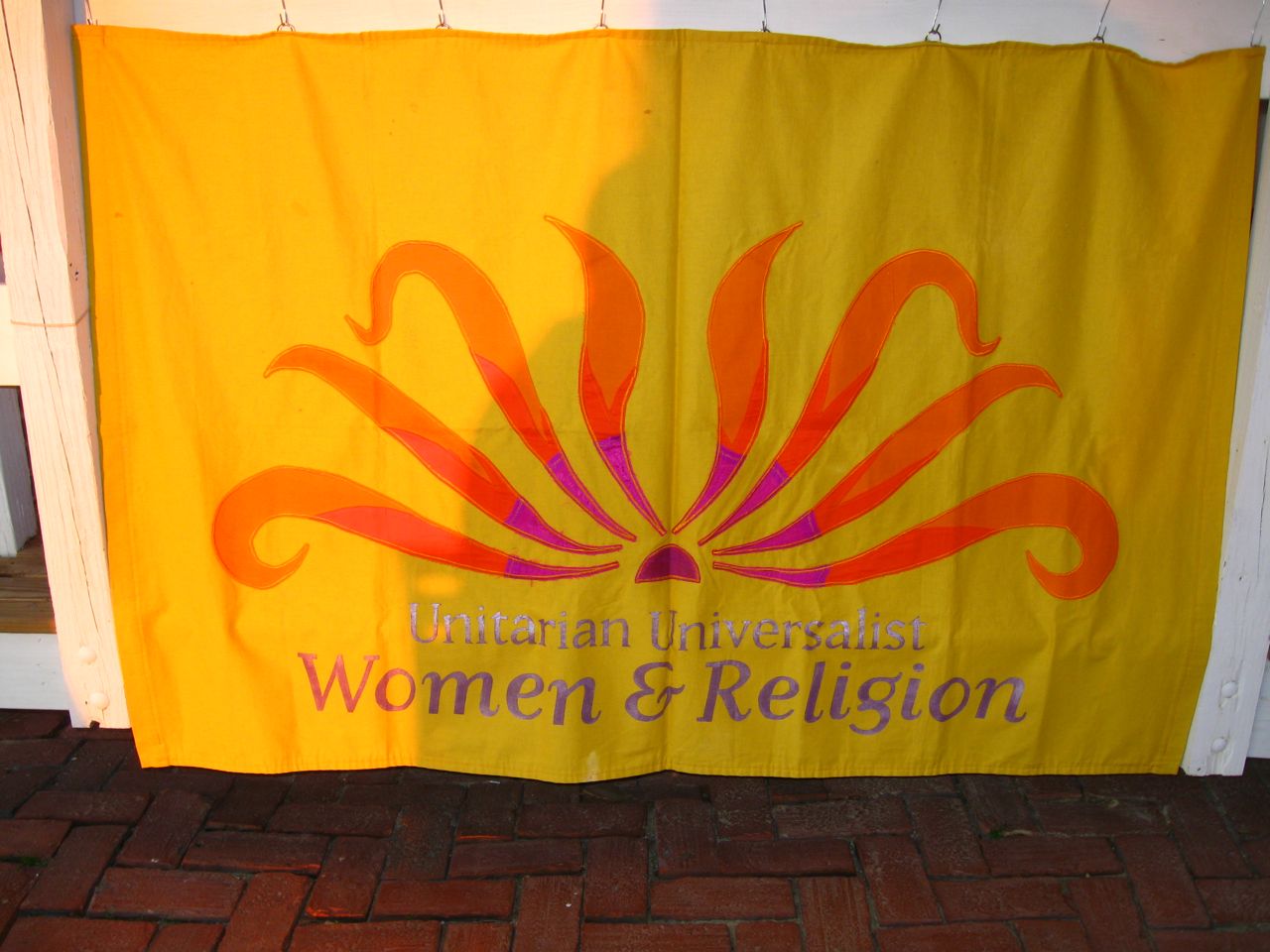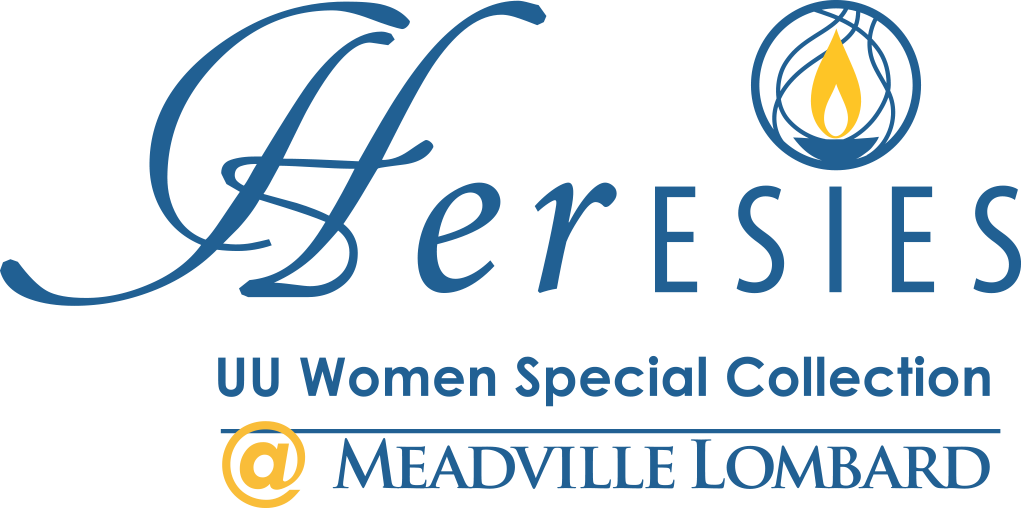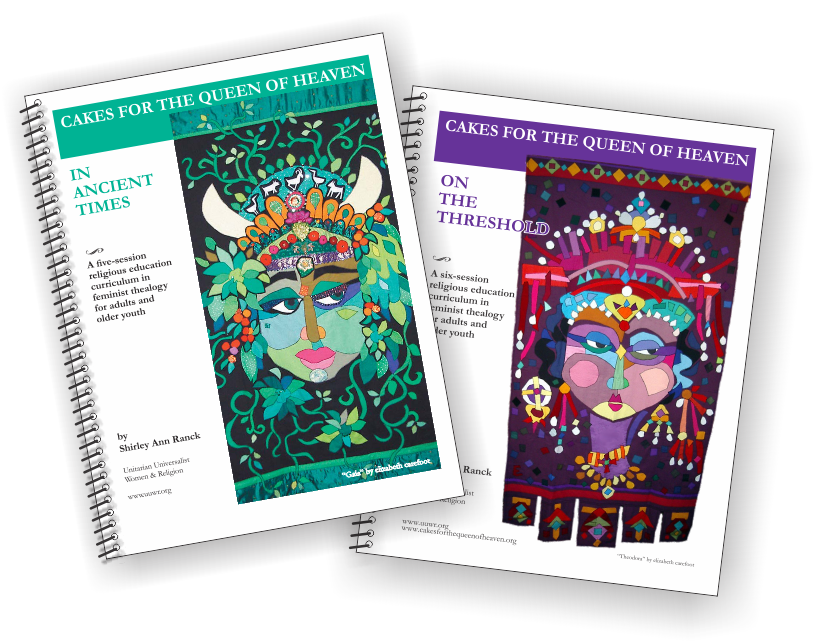 The Women and Religion movement officially began in 1977, with the passage of the Women and Religion Resolution at the Unitarian Universalist Association's (UUA) annual General Assembly. However, the real beginnings of the movement are to be found earlier. In the mid-1970's, there was a growing concern that the male biases of religion remained unexamined and unchanged. In 1975, the International Association for Religious Freedom (IARF) sponsored the International Women's Year Conference. Unitarian Universalists Lucile Schuck-Longview and Dr. Rita Taubenfeld developed a resolution at the conference. That same year the IARF passed the resolution calling for Equal Rights and Opportunities for Women.
The Women and Religion movement officially began in 1977, with the passage of the Women and Religion Resolution at the Unitarian Universalist Association's (UUA) annual General Assembly. However, the real beginnings of the movement are to be found earlier. In the mid-1970's, there was a growing concern that the male biases of religion remained unexamined and unchanged. In 1975, the International Association for Religious Freedom (IARF) sponsored the International Women's Year Conference. Unitarian Universalists Lucile Schuck-Longview and Dr. Rita Taubenfeld developed a resolution at the conference. That same year the IARF passed the resolution calling for Equal Rights and Opportunities for Women.
Many women across the continent shared the concerns expressed in this resolution, which served as the catalyst for the development of the Unitarian Universalist Women & Religion Resolution. Longview and several other women drafted a tentative resolution which was circulated to many others for their comments and concerns. In 1977, the Women and Religion Resolution was submitted by 548 members of 57 active societies, and passed unanimously at the UUA's General Assembly. The dual focus of the resolution was to urge the UUA to look at the religious roots of sexism, and to encourage all Unitarian Universalists to examine the extent to which religious beliefs influence sex-role stereotypes in interpersonal behavior within families and friendships and in the workplace.
The Women and Religion Resolution established the Women and Religion Committee - first appointed by the President and later by the UUA Board of Trustees - which is charged with overseeing the implementation of the resolution. Committee members were originally chosen from constituencies of the UUA at large, as well as from the following organizations: Liberal Religious Educators' Association (LREDA), Ministerial Sisterhood Unitarian Universalist (MSUU; dissolved 2006), the Unitarian Universalist Ministers Association (UUMA), and the Unitarian Universalist Women's Federation (UUWF). The committee values and actively seeks diversity of race, gender-orientation, and age. In addition to establishing the continental Committee, the UUA committed itself in 1978 to providing staff support for the committee's work - for a while in the form of a UUA staff liaison who could make available to the committee other resources at UUA headquarters.
District Women and Religion Committees and Task Forces began to form as early as 1977. They were the first to develop recommendations for the implementation of the Women and Religion Resolution. These district organizations operate in diverse ways, and they tend to define themselves according to the particular interests and perceived needs of women in their district. Some of their activities include conducting retreats, conferences, and workshops; developing women's rituals; and publishing newsletters on issues of concern to Unitarian Universalist women.
In 1979, the first continental Women and Religion conference for district leadership was convened in Grailville, Ohio. Out of this conference came a movement to revise what would subsequently be called the UUA Principles and Purposes. A number of conferees felt that the proposed Purposes did not affirm women's experience as much as they did men's, and that they lacked a respect for the totality of life and for the earth.
These women presented a draft of revisions to their districts. In 1981, two separate drafts submitted by districts appeared on the General Assembly agenda. After many years of intense debate, broad congregational involvement, and high drama, a new statement of Purposes and Principles was adopted in 1985. They reflect the influence of women in the rejection of hierarchy and in the embracing of a sense of connectedness and respect for the totality of life.
Several gatherings and convocations have taken place over the years, some to encourage more inter-district communication, and some to strengthen the ties among such organizations as Women and Religion, UUWF, LREDA, and MSUU. At one such gathering, the joint conference on Feminist Theology held in East Lansing, Michigan, in 1980, the Women and Religion Committee presented Checking Our Balance: Auditing Concepts, Values, and Language, a process guide for congregational use. Cleansing Our Temple is the 1991 revision of that program.
In 1987, at the urging of the Continental Women and Religion Committee, the UUA underwent a Sexism Audit by an independent consulting firm. A Sexism Audit Monitoring Committee was charged with overseeing the recommendations of this assessment. The recommendations of the audit directed the Continental Women and Religion Committee to revise Checking Our Balance, to review the expectations for ministers and ministers' roles, and to begin the process of developing and articulating visions of a gender inclusive denominational association.
In January of 1989, after many years of discussion and at the recommendation of the Continental Women and Religion Committee, the first male member of the committee was appointed. This appointment represented the Committee's desire, first, to reflect the gender inclusion that it upholds and, generally, to bring men into the process of identifying and eliminating sexism. In 1994, "The Shared Ministry Sourcebook", edited by Barbara Child and published by the UUA was the Committee's last official body of work.
The work of changing institutions must be carried on at all levels. It is our hope that each district and local organization will tell its own story, and help keep alive the spirit of Women and Religion.
[As of] 2003, Unitarian Universalist Women and Religion (UUW&R) ... formally affiliated with the UUA with an emphasis on district programming. Programs inspired by the Women and Religion movement through the years are "Cakes For the Queen of Heaven", "Rise Up and Call Her Name", "Our Whole Lives", "Gender Justice", the Safe Congregations and the Welcoming Congregations programs and the soon to be published "Unraveling the Gender Knot". Rituals the W&R movement originated are The Water Ritual and sharing joys and concerns. The Sixth Source of UU Sources of Inspiration came from our movement: "Spiritual teachings of Earth-centered traditions, which celebrate the sacred circle of life and instruct us to live in harmony with the rhythms of nature".
The [2003] UUW&R continues the November Gatherings for leadership across the continent. All who are actively involved with district programming are welcome to join the new fiscal year's Core Committee by attending the November Gathering and making decisions for the coming year's action plan and budget. The Core Committee is made up of volunteers with Co-conveners, chosen for two year, staggered terms. It employs consensual decision making. How power is used is the Core Committee's underlying concern.
UUW&R's Mission Statement: Unitarian Universalist Women and Religion is dedicated to freeing ourselves, others and the Earth from traditional, historical and contemporary oppressive and patriarchial systems.
We continue to work together to implement the 1977 UUA Women and Religion Resolution.
*Most of this text is directly from the "Cleansing Our Temple" Resource A.
-- Helen Popenoe, 2003
Rosemary Matson continues the story in her W&R Memoir.
In 2007, the UUA decided to dis-affiliate all the Affiliated Organizations and discontinue the work of the UUA staff member assigned to manage those relationships. Many organizations did not survive, such as the UU Men's group. UUW&R struggled, both the Continental organization and the District Women and Religion groups. There were 13 of the original 19 groups at that time. In 2024 there is only one group, Pacific Central District Women and Religion, that is a direct continuation of one of the original groups. There are other survivors. Some grew out of the W&R group, or merged with a District UUWF Chapter, or re-formed as independent UU women's groups.
Continental UUW&R was decimated in 2009 when the co-convenors both moved on to other work at the same time, leaving a gap that became difficult to fill. Annual meetings became sporadic, and fundraising was curtailed and slowly disappeared. Once the revised Cakes for the Queen of Heaven curriculum was published, and an online Store created to keep those available, the Store became the sole means of support for the group. UUWR has developed and expanded this resource, becoming the Publisher for the classic curricula (Cakes, Rise Up, Gender Knot, and Women of Wisdom), and several books, booklets, and CDs. With the store and website technology available, making sure classic and newer resources are available and promoted became one main focus. Another is networking with the remaining UU women's groups and retreats. And maintaining Archives and the Herstory of our movement.
We've also created a vibrant and resource-full presence in the Exhibit Hall at General Assembly.
-- Gretchen Ohmann 2024
Additional resources:
District and Regional Herstories
Congregational Herstories




